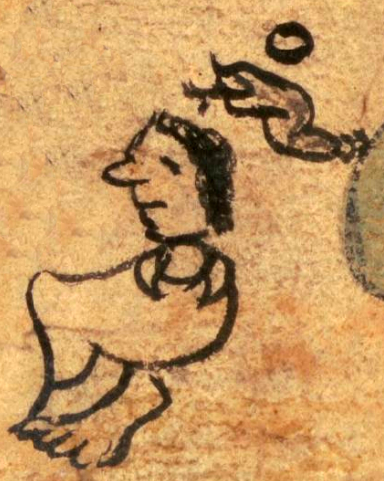coatl (CQ)
This element for a snake or serpent (coatl) has been carved from the personal name glyph, Ce Coatl (One Serpent). It shows a snake in a profile view facing toward the viewer's left. It has a curve or kink in the middle of its body, a rattler tail, a protruding and bifurcated tongue, and an eye. It is painted purple or gray.
Stephanie Wood
The snake is a day sign in the calendar. Here, it is the name of an elite male, as shown in the contextualizing image. The man sits wearing a cape tied above the shoulder. He may be the possessor of the milpa mentioned in Coatl Imilpa (see below). See also how this snake compares to an example from the Codex Mendoza (below).
Stephanie Wood
covers ruling men and women of Tecamachalco through 1593
Randall Rodríguez
snakes, culebras, vipers, víboras, serpents, serpientes, cohuatl, crótalos

coa(tl), snake/serpent, https://nahuatl.wired-humanities.org/content/coatl
la serpiente
Stephanie Wood
The Codex Quetzalecatzin, aka Mapa de Ecatepec-Huitziltepec, Codex Ehecatepec-Huitziltepec, or Charles Ratton Codex. Library of Congress. https://www.loc.gov/item/2017590521/
The Library of Congress, current custodian of this pictorial Mexican manuscript, hosts a digital version online. It is not copyright protected.




